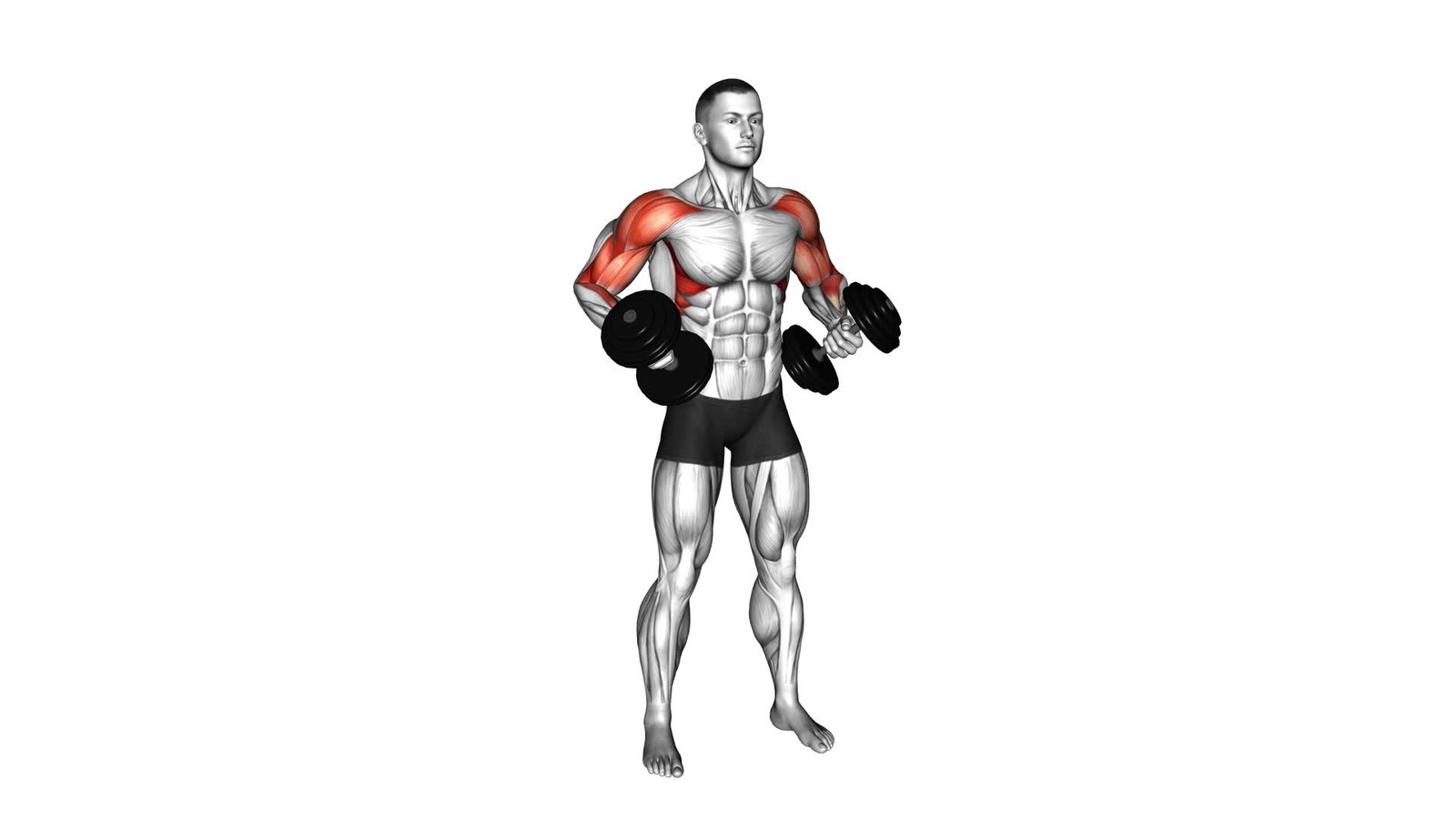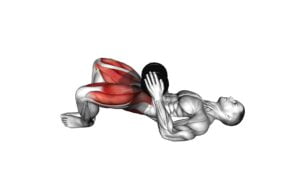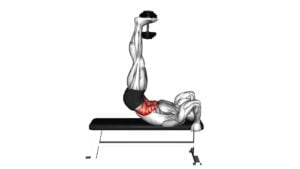Dumbbell Standing Hip Hugger (male) – Video Exercise Guide & Tips

Get ready to tone and strengthen your hips with the Dumbbell Standing Hip Hugger. This exercise is perfect for men looking to target their lower body.
Watch This Exercise Video
In this video exercise guide, you'll learn the proper form and technique to maximize your results. Plus, we'll share variations for advanced users and tips to avoid common mistakes.
Get ready to take your fitness routine to the next level with the Dumbbell Standing Hip Hugger. Let's get started!
Key Takeaways
- Improves hip mobility
- Activates glute muscles
- Increases stability and power in lower body
- Helps prevent injuries and provides support to hips and lower back
Benefits of the Dumbbell Standing Hip Hugger
You will reap various benefits from incorporating the Dumbbell Standing Hip Hugger into your workout routine. This exercise is highly effective for improving hip mobility and activating your glutes. Hip mobility is crucial for overall movement and flexibility, and by regularly performing the Dumbbell Standing Hip Hugger, you can enhance the range of motion in your hips.
When you perform this exercise, you engage your glute muscles, which are essential for stability and power in your lower body. By activating your glutes, you not only strengthen them but also improve your overall athletic performance. Strong glutes are also beneficial for preventing injuries, as they provide support and stability to your hips and lower back.
Incorporating the Dumbbell Standing Hip Hugger into your routine can also help correct muscle imbalances. Many people have weak glute muscles due to prolonged periods of sitting or sedentary lifestyles. This exercise specifically targets and strengthens the glute muscles, helping to rebalance your lower body.
Now that you understand the benefits of the Dumbbell Standing Hip Hugger, it's important to learn about proper form and technique to maximize its effectiveness and prevent injury.
Proper Form and Technique
To perform the Dumbbell Standing Hip Hugger with proper form and technique, maintain a stable stance and engage your core throughout the exercise. Here are some key points to keep in mind:
- Stable Stance: Start by standing with your feet shoulder-width apart and keep your knees slightly bent. This will provide a solid foundation for the exercise and help you maintain balance and stability.
- Engage Your Core: Throughout the movement, focus on tightening your abdominal muscles. This won't only help protect your lower back but also increase the effectiveness of the exercise by targeting your core muscles.
- Avoid Common Mistakes: One common mistake is rounding your back during the exercise. To prevent this, keep your back straight and maintain good posture throughout the movement. Another mistake to avoid is using momentum to swing the dumbbell. Instead, focus on controlled and deliberate movements to fully engage your muscles.
When it comes to workout frequency, it's recommended to perform the Dumbbell Standing Hip Hugger exercise 2-3 times a week. This will allow your muscles enough time to recover and adapt to the exercise, leading to better results over time.
Variation for Advanced Users
Ready to take your workout to the next level?
For advanced users, there are challenging modifications available for the Dumbbell Standing Hip Hugger exercise.
These variations not only provide a greater challenge, but also offer additional benefits for your core, glutes, and overall strength.
Get ready to push yourself and reap the rewards of these advanced variations.
Challenging Modifications for Experts
Executing a one-arm dumbbell standing hip hugger with an added resistance band is a demanding modification that will challenge even the most advanced users. This advanced modification combines the stability and strength required in the hip hugger exercise with the added resistance provided by the resistance band.
Here are three challenging modifications for experts to further enhance their workout:
- Increase the weight: Use heavier dumbbells to intensify the exercise and challenge your muscles even more. This will require greater strength and control to perform the movement effectively.
- Incorporate explosive movements: Add explosive movements, such as a jump or a plyometric element, to increase the difficulty level. This will engage more muscles and elevate your heart rate, providing a more intense workout.
- Perform the exercise on an unstable surface: Try doing the one-arm dumbbell standing hip hugger on a stability ball or a balance board. This will challenge your core stability and overall balance, making the exercise even more demanding.
Benefits of Advanced Variations
One benefit of advanced variations is that they provide a higher level of challenge for experienced users. These advanced modifications are designed to push your limits and take your workout to the next level. By incorporating progressions and regressions, you can tailor the exercises to your fitness level and continue to make progress.
Advanced variations allow you to target specific muscle groups more intensely, helping you build strength and endurance. They also help prevent plateaus and keep your workouts from becoming monotonous. However, it's important to remember that with advanced variations, proper form and technique are crucial to avoid injuries.
Common Mistakes to Avoid
To avoid common mistakes while performing the Dumbbell Standing Hip Hugger exercise, make sure you maintain proper form and avoid these key errors:
- Swinging the weights: One of the most common mistakes is using momentum to swing the dumbbells up and down. This not only reduces the effectiveness of the exercise but also puts unnecessary strain on your lower back. Instead, focus on slow and controlled movements, keeping your core engaged throughout.
- Leaning forward or backward: Another mistake to avoid is leaning too far forward or backward during the exercise. This can compromise your form and lead to improper muscle activation. To maintain proper alignment, keep your chest lifted and your shoulders back, ensuring that your body stays upright throughout the movement.
- Neglecting the hip hinge: The hip hinge is a crucial part of this exercise, as it helps engage your glutes and hamstrings effectively. Failing to hinge at the hips and relying solely on bending your knees can lead to suboptimal results. Remember to push your hips back as you lower the dumbbells, keeping your spine neutral and your knees slightly bent.
By avoiding these common mistakes and focusing on maintaining proper form, you can ensure that you get the most out of the Dumbbell Standing Hip Hugger exercise.
Now, let's move on to some tips for maximizing your results.
Tips for Maximizing Results
To maximize your results with the Dumbbell Standing Hip Hugger exercise, it's important to focus on proper form techniques. Ensure that you're engaging your core and glutes throughout the movement, and avoid using momentum or swinging the weights.
Additionally, consistency is key for optimal results, so aim to incorporate this exercise into your workout routine at least 2-3 times per week.
Proper Form Techniques
To maximize your results, ensure that you maintain proper form when performing the Dumbbell Standing Hip Hugger exercise. Here are three important tips to help you achieve the best possible form:
- Engage your core: Keep your abdominal muscles tight throughout the exercise. This will help stabilize your body and prevent any unnecessary strain on your lower back.
- Control your movement: Avoid swinging or jerking the dumbbell as you bring it across your body. Instead, focus on controlled and smooth movements, engaging your hip muscles to drive the motion.
- Maintain good posture: Stand tall with your chest lifted and shoulders back. Avoid rounding your back or hunching forward, as this can lead to improper alignment and decreased effectiveness of the exercise.
By following these proper form techniques, you'll ensure that you're targeting the correct muscles and maximizing your results.
Now, let's move on to the next section where we'll discuss workout frequency recommendations.
Workout Frequency Recommendations
Maximize your results by following these workout frequency recommendations.
When it comes to workout intensity, it's important to find the right balance. Pushing yourself too hard can lead to burnout and injuries, while not pushing hard enough may limit your progress. It's generally recommended to aim for moderate to high-intensity workouts, allowing your muscles to work hard and adapt.
However, it's equally important to give your body enough time to recover. Recovery time allows your muscles to repair and grow stronger. Depending on your fitness level and the intensity of your workouts, it's suggested to have a day or two of rest between strength training sessions. This will ensure that you're maximizing your results without overtaxing your body.
With these workout frequency recommendations in mind, let's move on to a sample workout routine.
Sample Workout Routine
Follow this sample workout routine to build strength and improve your hip huggers. This routine is designed to gradually increase workout intensity and exercise progression, helping you achieve your fitness goals effectively.
Here are three key components of this workout routine:
- Warm-up: Begin with a dynamic warm-up to prepare your body for the workout. Perform exercises like jumping jacks, high knees, and hip circles to increase blood flow and loosen up your muscles.
- Strength Training: Incorporate exercises that target your lower body and core muscles. Start with the dumbbell standing hip hugger exercise, performing 3 sets of 12 reps with a challenging weight. Gradually increase the weight as you get stronger. Additionally, include exercises like squats, lunges, and deadlifts to further enhance your strength and stability.
- Cardiovascular Exercise: Include cardio workouts to improve your overall fitness and burn calories. Options like running, cycling, or swimming for 20-30 minutes at moderate intensity will elevate your heart rate and help you achieve your weight loss goals.
Remember to cool down and stretch after your workout to prevent muscle soreness and promote flexibility. With this sample routine, you can gradually increase the intensity and progression of your workouts, leading to improved strength and hip hugger performance.
Frequently Asked Questions
How Heavy Should the Dumbbells Be for the Standing Hip Hugger Exercise?
For the standing hip hugger exercise, it's important to choose the right dumbbell weight. The ideal weight will depend on your fitness level and goals. Start with a weight that challenges you but allows you to maintain proper form. Gradually increase the weight as you get stronger.
Using appropriate dumbbell weights will help you build strength and improve stability in your hips and core. This exercise can also enhance your overall balance and coordination.
Can Women Also Perform the Dumbbell Standing Hip Hugger Exercise?
Yes, men can perform the dumbbell standing hip hugger exercise. It isn't limited to women only. This exercise benefits both men and women by targeting the hip muscles and improving hip mobility.
It also helps to strengthen the lower body and enhance stability. Incorporating dumbbells adds resistance, making the exercise more challenging.
How Often Should I Incorporate the Dumbbell Standing Hip Hugger Into My Workout Routine?
To maximize the benefits of your lower body workout, it's important to know how frequently you should include the dumbbell standing hip hugger.
This exercise targets your glutes, hamstrings, and quads, helping to build strength and improve overall lower body stability.
To see progress, aim to incorporate this exercise into your routine 2-3 times per week. However, it's always important to listen to your body and adjust the frequency based on your individual fitness level and recovery abilities.
What Other Exercises Can I Combine With the Dumbbell Standing Hip Hugger for a Full Lower Body Workout?
To create a full lower body workout, combine the Dumbbell Standing Hip Hugger with dumbbell lunges and glute bridges.
Dumbbell lunges will target your quads, hamstrings, and glutes, while glute bridges will specifically work your glutes and hamstrings.
By incorporating these exercises into your routine, you'll engage multiple muscles in your lower body, helping to build strength and improve overall fitness.
Remember to start with lighter weights and gradually increase as you become more comfortable.
Are There Any Modifications or Alternatives for Individuals With Limited Mobility or Injuries?
If you have limited mobility or injuries, there are modifications and alternative exercises available.
For limited mobility, you can try seated variations of the standing hip hugger or use resistance bands instead of dumbbells.
Alternatively, you can focus on exercises that target specific muscles of the lower body, such as seated leg extensions, seated calf raises, or seated glute bridges.
These exercises can help you work your lower body effectively while accommodating your limitations.
Conclusion
In conclusion, the dumbbell standing hip hugger is an effective exercise for targeting the hips and glutes. By maintaining proper form and technique, you can maximize the benefits of this exercise.
Advanced users can try variations to challenge themselves further. However, it's important to avoid common mistakes to prevent injury.
By following these tips and incorporating the dumbbell standing hip hugger into your workout routine, you can achieve great results for your lower body.

Author
Years ago, the spark of my life’s passion ignited in my mind the moment I stepped into the local gym for the first time. The inaugural bead of perspiration, the initial endeavor, the very first surge of endorphins, and a sense of pride that washed over me post-workout marked the beginning of my deep-seated interest in strength sports, fitness, and sports nutrition. This very curiosity blossomed rapidly into a profound fascination, propelling me to earn a Master’s degree in Physical Education from the Academy of Physical Education in Krakow, followed by a Sports Manager diploma from the Jagiellonian University. My journey of growth led me to gain more specialized qualifications, such as being a certified personal trainer with a focus on sports dietetics, a lifeguard, and an instructor for wellness and corrective gymnastics. Theoretical knowledge paired seamlessly with practical experience, reinforcing my belief that the transformation of individuals under my guidance was also a reflection of my personal growth. This belief holds true even today. Each day, I strive to push the boundaries and explore new realms. These realms gently elevate me to greater heights. The unique combination of passion for my field and the continuous quest for growth fuels my drive to break new ground.



